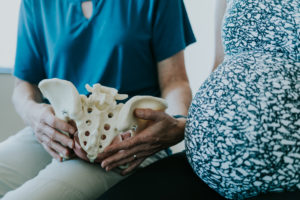Incontinence
Physiotherapy can be an effective treatment for incontinence, providing non-invasive and holistic methods to improve bladder and bowel control.
 The primary focus of physiotherapy in treating incontinence is on strengthening the pelvic floor muscles, which play a crucial role in maintaining continence. Lynda Lawrence is our in house Pelvic Floor Physiotherapist.
The primary focus of physiotherapy in treating incontinence is on strengthening the pelvic floor muscles, which play a crucial role in maintaining continence. Lynda Lawrence is our in house Pelvic Floor Physiotherapist.
Pelvic floor muscle training (PFMT) is one of the most common physiotherapy techniques used to manage incontinence. The pelvic floor muscles support the bladder, bowel, and uterus, and their strength and function are vital for controlling urination and defecation. Physiotherapists guide patients through exercises designed to strengthen these muscles, such as Kegel exercises. These exercises involve repeatedly contracting and relaxing the pelvic floor muscles, which can significantly enhance muscle tone and endurance, thus improving bladder and bowel control.
Biofeedback is another tool used by physiotherapists to treat incontinence.
This technique involves using electronic monitoring devices to provide real-time feedback to patients about their pelvic floor muscle activity. By visualizing or hearing signals corresponding to their muscle contractions, patients can learn to perform exercises more effectively, ensuring they target the right muscles with the correct intensity and duration.
Bladder training is also an essential component of physiotherapy for incontinence.
 This technique involves establishing a regular urination schedule and gradually increasing the intervals between bathroom visits. Physiotherapists help patients develop strategies to manage and suppress the urge to urinate, thereby retraining the bladder to hold urine for longer periods.
This technique involves establishing a regular urination schedule and gradually increasing the intervals between bathroom visits. Physiotherapists help patients develop strategies to manage and suppress the urge to urinate, thereby retraining the bladder to hold urine for longer periods.
For individuals with bowel incontinence, physiotherapists can provide specific exercises and techniques to improve bowel control. This may include dietary advice to manage bowel regularity, as well as exercises to strengthen the sphincter and surrounding muscles.
Physiotherapy also addresses underlying issues that may contribute to incontinence, such as poor posture, improper lifting techniques, and chronic coughing. By correcting these contributing factors, physiotherapists help reduce the strain on pelvic floor muscles, further supporting continence.
In summary, physiotherapy offers a comprehensive approach to managing incontinence through targeted exercises, biofeedback, bladder training, and addressing contributory lifestyle factors. These non-invasive techniques not only improve muscle strength and function but also enhance patients’ overall quality of life by restoring their confidence and independence.
